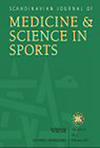休闲时间体力活动、久坐行为与生物衰老:来自遗传相关性和孟德尔随机化分析的证据
IF 3.5
2区 医学
Q1 SPORT SCIENCES
引用次数: 0
摘要
缺乏身体活动和久坐行为与较高的年龄相关发病率和死亡率相关。然而,它们是否与加速生物衰老有因果关系还没有完全阐明。利用现有最大的全基因组关联研究(GWAS)汇总数据,我们实施了一个全面的分析框架,以调查遗传预测的中度至剧烈休闲时间体力活动(MVPA)、休闲屏幕时间(LST)和四种表观遗传年龄加速(EAA)指标之间的关系:HannumAgeAccel、intrinsic HorvathAgeAccel、PhenoAgeAccel和GrimAgeAccel。通过遗传相关分析,量化了这些性状的共同遗传背景。通过单变量和多变量孟德尔随机化(MR)评估总体和独立关联。最近开发的组织分割MR方法被进一步采用,以探索潜在的组织特异性途径,有助于观察到的关联。在所调查的四种EAA测量方法中,表型accel和GrimAgeAccel的结果一致。这两项指标与MVPA呈负相关(rg = - 0.18 ~ - 0.29),与LST呈正相关(rg = 0.22 ~ 0.37)。单变量MR显示遗传预测的LST对GrimAgeAccel的强大影响(βIVW = 0.69, p = 1.10 × 10−7),而遗传预测的MVPA (βIVW = - 1.02, p = 1.50 × 10−2)和LST (βIVW = 0.37, p = 1.90 × 10−2)对PhenoAgeAccel的影响很小。在考虑了MVPA和其他重要混杂因素后,多变量MR表明遗传预测的LST和GrimAgeAccel之间存在独立关联。组织分割MR提示骨骼肌组织相关变异是驱动LST对GrimAgeAccel影响的主要原因。研究结果支持久坐不动的生活方式是加速表观遗传衰老的一个可改变的风险因素,强调需要采取预防策略来减少久坐不动的屏幕时间,以实现健康老龄化。本文章由计算机程序翻译,如有差异,请以英文原文为准。
Leisure‐Time Physical Activity, Sedentary Behavior, and Biological Aging: Evidence From Genetic Correlation and Mendelian Randomization Analyses
Physical inactivity and sedentary behavior are associated with higher risks of age‐related morbidity and mortality. However, whether they causally contribute to accelerating biological aging has not been fully elucidated. Utilizing the largest available genome‐wide association study (GWAS) summary data, we implemented a comprehensive analytical framework to investigate the associations between genetically predicted moderate‐to‐vigorous leisure‐time physical activity (MVPA), leisure screen time (LST), and four epigenetic age acceleration (EAA) measures: HannumAgeAccel, intrinsic HorvathAgeAccel, PhenoAgeAccel, and GrimAgeAccel. Shared genetic backgrounds across these traits were quantified through genetic correlation analysis. Overall and independent associations were assessed through univariable and multivariable Mendelian randomization (MR). A recently developed tissue‐partitioned MR approach was further adopted to explore potential tissue‐specific pathways that contribute to the observed associations. Among the four EAA measures investigated, consistent results were identified for PhenoAgeAccel and GrimAgeAccel. These two measures were negatively genetically correlated with MVPA (r g = −0.18 to −0.29) and positively genetically correlated with LST (r g = 0.22–0.37). Univariable MR yielded a robust effect of genetically predicted LST on GrimAgeAccel (β IVW = 0.69, p = 1.10 × 10−7 ), while genetically predicted MVPA (β IVW = −1.02, p = 1.50 × 10−2 ) and LST (β IVW = 0.37, p = 1.90 × 10−2 ) showed marginal effects on PhenoAgeAccel. Multivariable MR suggested an independent association between genetically predicted LST and GrimAgeAccel after accounting for MVPA and other important confounders. Tissue‐partitioned MR suggested skeletal muscle tissue associated variants to be predominantly responsible for driving the effect of LST on GrimAgeAccel. Findings support sedentary lifestyles as a modifiable risk factor in accelerating epigenetic aging, emphasizing the need for preventive strategies to reduce sedentary screen time for healthy aging.
求助全文
通过发布文献求助,成功后即可免费获取论文全文。
去求助
来源期刊
CiteScore
7.90
自引率
4.90%
发文量
162
审稿时长
3 months
期刊介绍:
The Scandinavian Journal of Medicine & Science in Sports is a multidisciplinary journal published 12 times per year under the auspices of the Scandinavian Foundation of Medicine and Science in Sports.
It aims to publish high quality and impactful articles in the fields of orthopaedics, rehabilitation and sports medicine, exercise physiology and biochemistry, biomechanics and motor control, health and disease relating to sport, exercise and physical activity, as well as on the social and behavioural aspects of sport and exercise.

 求助内容:
求助内容: 应助结果提醒方式:
应助结果提醒方式:


